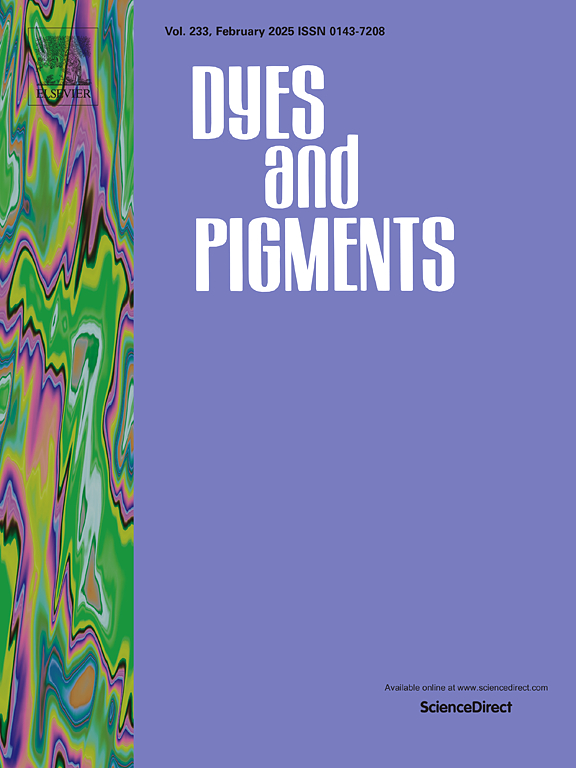The influence of substituted indigo derivatives on the preparation and properties of “Maya” pigments
IF 4.1
3区 工程技术
Q2 CHEMISTRY, APPLIED
引用次数: 0
Abstract
A small series of indigo derivatives were mixed with palygorskite or sepiolite, respectively, and heated at 150 °C overnight in order to prepare stable pigments. While mixtures with violet halo-indigos such as Tyrian Purple (6,6′-dibromoindigo) and its difluoro- and dichloro-derivatives formed blue pigments with a slight greenish hue upon heating, alkoxy-indigo derivatives turned olive green during the heating process when mixed with palygorskite or sepiolite. Mixtures of isatin and indigo with palygorsite led to the formation of green pigments. The pigments were analyzed by spectroscopy (UV-VIS and Raman) and electron microscopy. Thermal studies were carried out and the obtained pigments were stable at temperatures of up to 250 °C. Maya Blue and pigment samples derived from 6,6′-dichloroindigo were tested for their flame retarding properties in mixtures with cellulose acetate and both additives led to distinct heat release rate reductions.

取代靛蓝衍生物对 "玛雅 "颜料的制备和特性的影响
为了制备稳定的颜料,我们将一系列靛蓝衍生物分别与堇青石或霞石混合,并在 150 °C 下加热过夜。与紫色卤代靛蓝(如泰里安紫(6,6′-二溴靛蓝)及其二氟和二氯衍生物)的混合物在加热后会形成略带绿色的蓝色颜料,而烷氧基靛蓝衍生物在与堇青石或海泡石混合后,在加热过程中会变成橄榄绿色。将异靛蓝和靛蓝与白云母混合可形成绿色颜料。这些颜料通过光谱(紫外-可见光谱和拉曼光谱)和电子显微镜进行了分析。进行了热研究,结果表明所获得的颜料在高达 250 ℃ 的温度下都很稳定。测试了玛雅蓝和从 6,6′-二氯靛蓝中提取的颜料样品在与醋酸纤维素混合物中的阻燃性能,两种添加剂都明显降低了热释放率。
本文章由计算机程序翻译,如有差异,请以英文原文为准。
求助全文
约1分钟内获得全文
求助全文
来源期刊

Dyes and Pigments
工程技术-材料科学:纺织
CiteScore
8.20
自引率
13.30%
发文量
933
审稿时长
33 days
期刊介绍:
Dyes and Pigments covers the scientific and technical aspects of the chemistry and physics of dyes, pigments and their intermediates. Emphasis is placed on the properties of the colouring matters themselves rather than on their applications or the system in which they may be applied.
Thus the journal accepts research and review papers on the synthesis of dyes, pigments and intermediates, their physical or chemical properties, e.g. spectroscopic, surface, solution or solid state characteristics, the physical aspects of their preparation, e.g. precipitation, nucleation and growth, crystal formation, liquid crystalline characteristics, their photochemical, ecological or biological properties and the relationship between colour and chemical constitution. However, papers are considered which deal with the more fundamental aspects of colourant application and of the interactions of colourants with substrates or media.
The journal will interest a wide variety of workers in a range of disciplines whose work involves dyes, pigments and their intermediates, and provides a platform for investigators with common interests but diverse fields of activity such as cosmetics, reprographics, dye and pigment synthesis, medical research, polymers, etc.
 求助内容:
求助内容: 应助结果提醒方式:
应助结果提醒方式:


